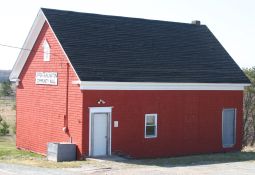|
Introduction
Whether it was the stability of a well-designed model, or the stagnation of a system given little attention by political leaders and the voting public, the public education system in Nova Scotia changed remarkably little for over 85 years from 1864-1949. The system for setting and enforcing provincial policy, for training and licensing teachers, the method of funding the system, and the buildings where public school education was offered varied little in that interval. In rural areas it is difficult to identify where they changed at all except in infrequent curriculum changes that resulted in a new textbook for any given subject at about 25 year intervals.
The one-room schools that dotted the province at roughly 4-5 mile intervals in the settled communities were the physical embodiment of that system. Local ratepayers administered the system as school trustees and secretary.
Technology changes in those buildings were extremely rare with the first major change for rural schools not coming until rural electrification after World War Two.
Thatís not to say that problems with the system were not noted nor changes recommended in the 85-year interval. The low pay for teachers, and the system of taxation were an old story even before 1864, but change in an economically depressed and socially conservative province did not come easily, or frequently.
Then as provincial roads and financial capacity improved after WWII, long sought changes came in a rush and the one-room rural schools ceased operation all across the province. New rural high schools and consolidated elementary schools replaced the one-room rural school system in a span of less than a decade.
The school in Upper Burlington, Hants County is one instance of a 100-year history of rural public school education in Nova Scotia. To most who attended, it has a special place in their memory, whether favorable or not. This summary is an attempt to document a few of those memories, and to stimulate preservation of them and the old building itself.
